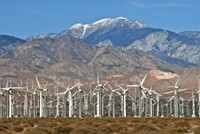Advertisement
Grab your lab coat. Let's get started
Welcome!
Welcome!
Create an account below to get 6 C&EN articles per month, receive newsletters and more - all free.
It seems this is your first time logging in online. Please enter the following information to continue.
As an ACS member you automatically get access to this site. All we need is few more details to create your reading experience.
Not you? Sign in with a different account.
Not you? Sign in with a different account.
ERROR 1
ERROR 1
ERROR 2
ERROR 2
ERROR 2
ERROR 2
ERROR 2
Password and Confirm password must match.
If you have an ACS member number, please enter it here so we can link this account to your membership. (optional)
ERROR 2
ACS values your privacy. By submitting your information, you are gaining access to C&EN and subscribing to our weekly newsletter. We use the information you provide to make your reading experience better, and we will never sell your data to third party members.
Environment
Climate-Change Solutions
Cost of stabilizing CO2 is high but manageable, science panel says
by Jeff Johnson
May 8, 2007
To curb the growth of carbon dioxide emissions, an international scientific panel urges that a price be charged for CO2 air emissions, new non-carbon-emitting energy technologies be quickly developed, and existing clean technologies be more rapidly deployed.
The costs for stabilizing CO2 emissions would be high on a global scale but would be manageable, says the May 4 report from the Intergovernmental Panel on Climate Change (IPCC). The report plots various greenhouse gas emissions scenarios with carbon costs varying from zero to $100 per ton emitted. It finds that the highest cost and the most aggressive application of non-carbon-emitting technologies would result in a 0.12% annual reduction in global gross domestic product. ??????????????????????
But looking at how the cost would play out between 2007 and 2030, the report estimates an 80% increase in global GDP over that time, which would be reduced by only 3% by aggressive emissions reductions. This level of spending would stabilize CO2 at 445???535 ppm by 2030.
The report identifies several key mitigation technologies and practices that are currently available to reduce greenhouse gas emissions. Most are familiar, such as greater energy efficiency in industry and buildings, more combined heat-and-power systems, and greater vehicle efficiency.
However, IPCC Chairman Rajendra Pachauri noted at a press briefing that "it is probably naive to believe that mere development of technologies in labs and workshops would be the answer without applying a package of polices and market forces, represented by a price attached to carbon."
Without such encouragement, Pachauri continued, "you are not likely to get a major dissemination of technologies, no matter how meritorious and desirable they would be."
The panel report also urges rapid deployment of such clean technologies. It estimates that between today and 2030, some $20 trillion will be spent to fulfill new energy needs worldwide, and because energy systems have a long lifetime, they will have a lasting impact on climate-change emissions far into the future.
The report notes that greenhouse gas emissions have grown by 70% from 1970 to 2004, with the largest sector increase, 145%, coming from energy supply. Emissions from transportation are next, with a 120% increase, followed by industrial emissions, which rose by 65% over the same time.
The report is the third from IPCC this year on climate change.



Join the conversation
Contact the reporter
Submit a Letter to the Editor for publication
Engage with us on Twitter